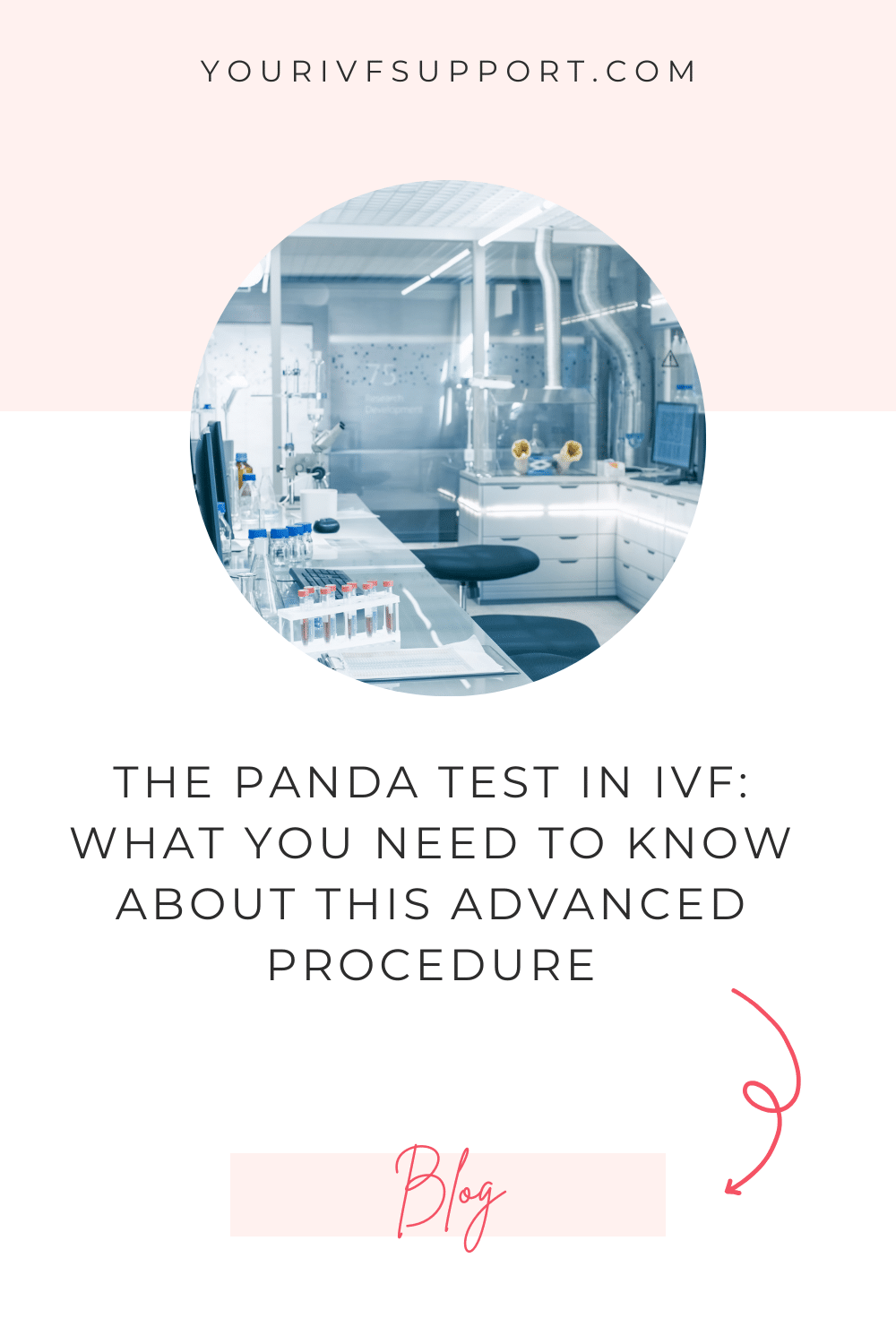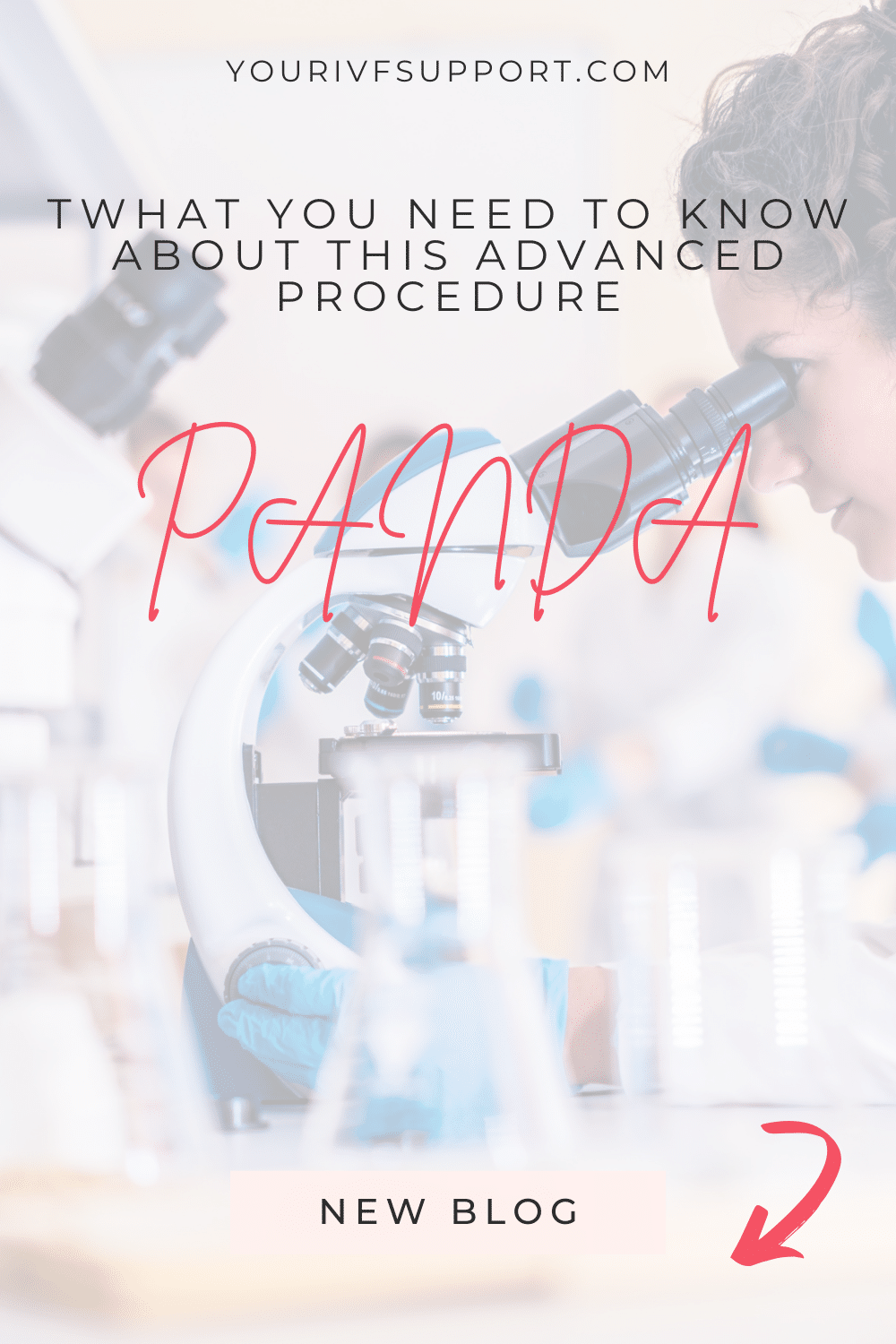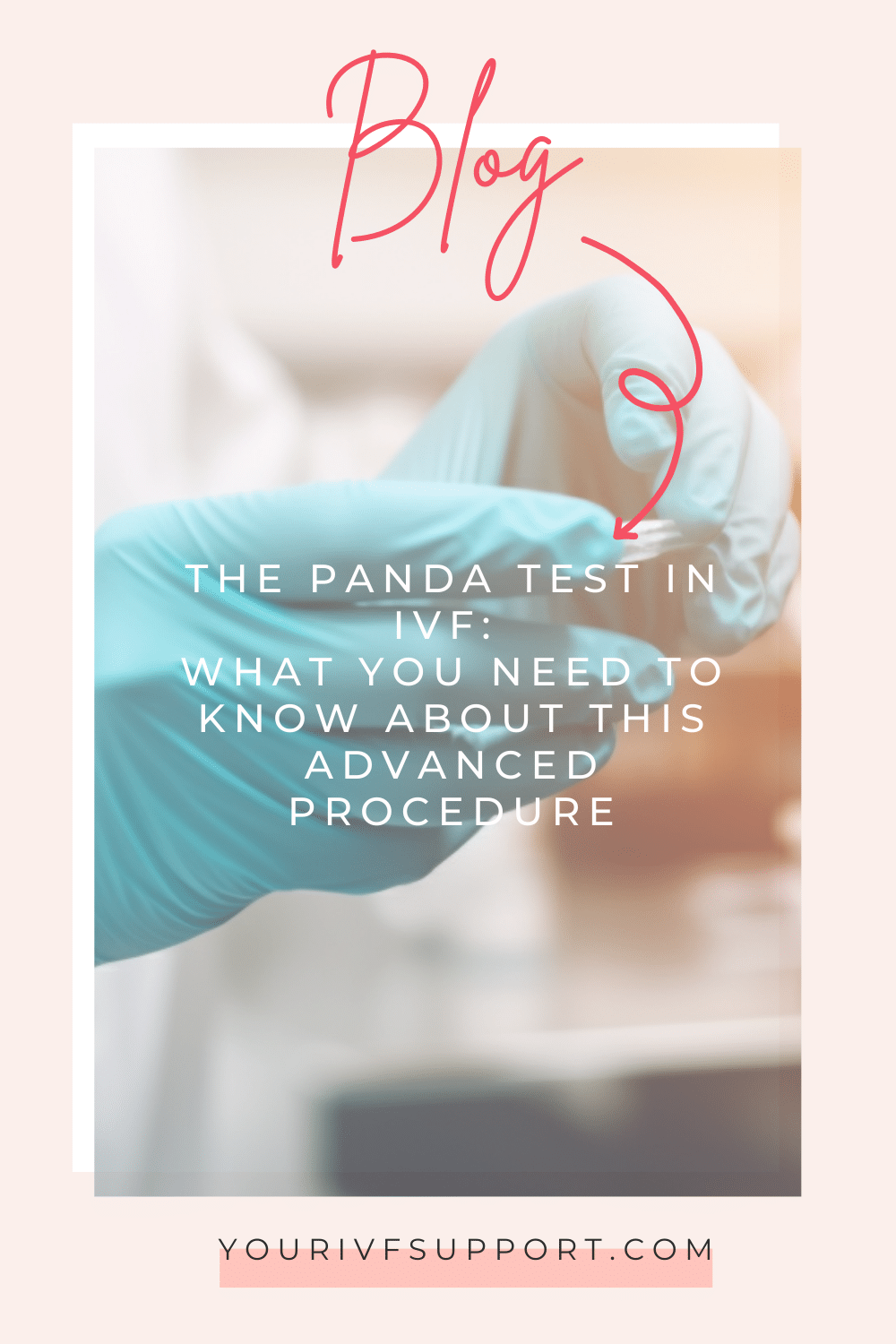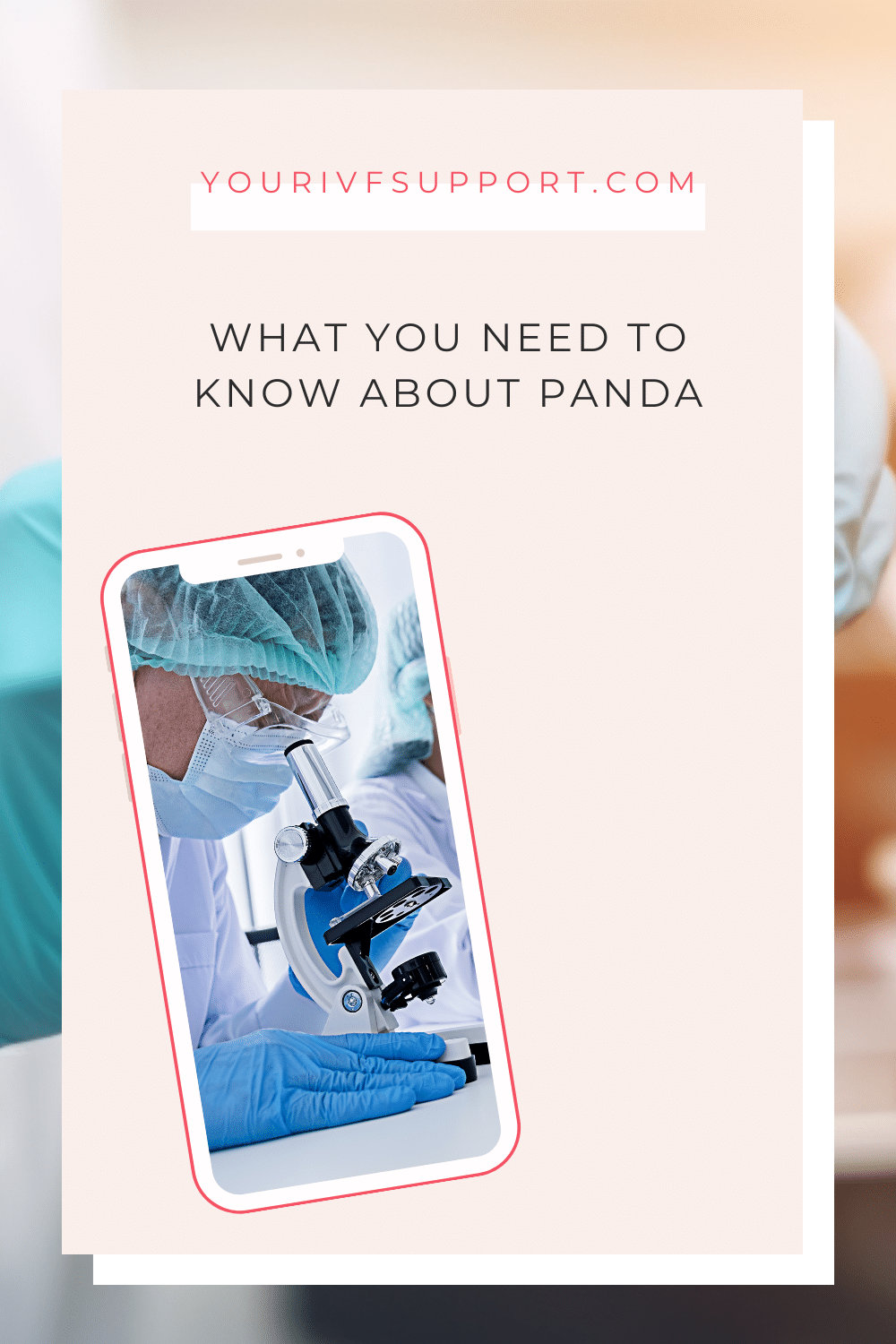The PANDA test (Preimplantation ANeuploidy Diagnosis by Array-CGH) is an important genetic test used during in vitro fertilisation (IVF) to assess the health and quality of embryos. In IVF treatment, eggs are fertilised outside the body and implanted in a woman's uterus. The PANDA test makes it possible to identify embryos with chromosomal abnormalities before they are transferred into the uterus. This can reduce the risk of miscarriage or genetic disease in the offspring.
The aim of IVF treatment is to make the dream of parenthood a reality. The PANDA test can help achieve this goal by improving the chances of treatment success and reducing the risk of complications. With this in mind, it is important to know what the PANDA test is and how it can be used. In this blog, I will explain everything you need to know about the PANDA test.
What is the PANDA test?
The PANDA test is a genomic test of embryos used in IVF treatment. IVF is a reproductive procedure in which eggs are fertilised outside the body and then implanted in a woman's womb. The PANDA test allows embryos with chromosomal abnormalities to be identified before they are transferred into the uterus. The technology used in the PANDA test is array CGH technology, which can provide accurate information about the embryo's genetic material.
The PANDA test is usually carried out after the egg has been fertilised, before it is transferred to the woman's uterus. A single cell is taken from the embryo and analysed using array CGH technology. This is a molecular technique that can identify chromosomal changes in the embryo's genetic material.
The array CGH technology compares the embryo's genetic material with a reference genome to detect chromosomal abnormalities, such as trisomies or deletions, in the embryo's cells. The results of the test are interpreted against the reference to find out whether the embryo has normal chromosomes or whether there are abnormalities that could indicate possible miscarriage or genetic disease.
By using the PANDA test, couples undergoing IVF treatment can improve their chances of success and minimise the risk of miscarriage or genetic disease in their offspring. The test is an important advance in IVF treatment, providing accurate information about the genetic make-up of the embryo to make an informed decision about transferring healthy embryos.

When is the PANDA test used?
The PANDA test is usually used to identify embryos with chromosomal defects before they are transferred to the uterus. This can reduce the risk of miscarriage or genetic disease in the offspring. The PANDA test can be used in a variety of settings.
Usually the PANDA test is performed when several embryos have been created and one is to be selected for transfer to the uterus. The test helps to minimise the risk of miscarriage by identifying embryos with chromosomal abnormalities and selecting only those that are considered healthy and most suitable for implantation.
The PANDA test is also useful for women who have already had several unsuccessful IVF cycles or who are over 35, as women in this age group have a higher risk of chromosomal abnormalities. Women who are considering pre-implantation genetic diagnosis (PGD) may also benefit from PANDA testing, as it can provide a more reliable diagnosis than other PGD tests.
It is important that the PANDA test is carried out by specialised laboratories that have the necessary technology and experience. The test should only be performed by qualified professionals who are able to provide accurate results. The right time for PANDA testing depends on several factors, including the stage of the IVF cycle and the woman's age. It is usually done in the pre-implantation phase, before the embryo is transferred to the uterus.


How is the PANDA test performed?
The PANDA test is an important genetic test carried out during IVF treatment to assess the health and quality of the embryos. Here is a detailed description of how the PANDA test is carried out:
Stimulation phase:
Before the PANDA test is performed, the woman is treated with hormones to stimulate her ovaries to produce more eggs. This is called stimulation or hormone treatment.
Collection of the eggs:
Once the eggs have matured sufficiently, they are retrieved in a short surgical procedure under general anaesthetic.
Fertilising the eggs:
The retrieved eggs are fertilised in the laboratory with sperm from the partner or a donor.
Development of the embryos:
After fertilisation, the embryos are cultured in the laboratory for a few days until they have reached a stage of development suitable for the PANDA test.
Collection of the cell sample:
A biopsy is taken from the embryo. This involves looking at a small part of the embryo under a microscope and using a fine needle to remove a single cell.
Analysis of the genetic material:
The removed cell is analysed using array CGH technology to determine the genetic make-up of the embryo. Chromosomal abnormalities such as trisomies or deletions are identified.
Results:
The results of the PANDA test are sent to the treating clinic within a few days so that embryos can be selected for transfer to the uterus.
It is important to know that the collection of the embryo cells is an invasive procedure and carries a certain risk of complications such as bleeding or infection. It is also possible for the embryo to be damaged during cell collection, which can lead to a reduced implantation rate or even loss of the embryo. However, studies have shown that the PANDA test is a safe and effective method of identifying embryos with chromosomal defects.
The PANDA test plays an important role in IVF treatment by identifying embryos with chromosomal abnormalities before they are transferred to the uterus. The test requires experienced personnel and specialised laboratories to provide accurate results.
"It is important to find out about your individual chances of success and alternative treatment options."
What is the difference between PANDA (Preimplantation ANeuploidy Diagnosis by Array-CGH) and PGT-A (Preimplantation Genetics - Aneuploidy)?
Both the PANDA test (Preimplantation ANeuploidy Diagnosis by Array-CGH) and PGT-A are preimplantation genetic diagnosis tests used in IVF to identify chromosomal abnormalities in embryos.
The difference is in the exact procedure. The PANDA test is a genetic test in which a cell is taken from the embryo and the genetic material is analysed using array CGH technology to identify embryos with chromosomal abnormalities.
PGT-A is another pre-implantation diagnostic technology, also known as aneuploidy screening. It also involves taking cells from the embryo and analysing them using next-generation sequencing technology. The aim is to identify embryos with abnormal chromosome numbers.
Both procedures aim to reduce the likelihood of miscarriage or genetic disease in the offspring. However, the PANDA test is more specific in identifying chromosomal abnormalities, while PGT-A is considered to be a more comprehensive screening for aneuploidy.
What are the benefits of the PANDA test?
The PANDA test has many benefits, especially for couples undergoing IVF treatment. The test can help improve the chances of treatment success by identifying embryos with chromosomal abnormalities and selecting only those that are considered healthy and best suited for implantation. By avoiding miscarriages and genetic disorders, it can also reduce the risk of physical and emotional distress for the couples involved.
What are the disadvantages of the PANDA test?
As with any medical procedure, there are potential risks and disadvantages associated with the PANDA test. These include the possibility of a false diagnosis or a false positive result, where an embryo is wrongly identified as abnormal. There is also a risk of complications such as bleeding or infection if there is an injury during the collection of the embryo cells. In addition, the PANDA test can be expensive and is not offered at all IVF clinics.
What are the risks and possible complications of PANDA testing?
As with any medical procedure, there are potential risks and complications with the PANDA test that should be considered.
One of the biggest risks of the PANDA test is that it can give false positive or false negative results. A false-positive result means that the embryo is mistakenly identified as abnormal, while a false-negative result means that an abnormal embryo is identified as normal. This type of result can lead to an incorrect diagnosis, which can cause emotional distress or unnecessary invasive tests.
There is also a risk of complications if the embryo's cells are removed. In rare cases, bleeding or infection can occur if the cell collection is not done properly. It is also possible for the embryo to be damaged during cell collection, which can lead to a reduced implantation rate or even loss of the embryo.
Another risk of the PANDA test is that it may not detect all chromosomal abnormalities. There are different types of chromosomal abnormalities and some may not be detected by a PANDA test. Therefore, it is possible that an embryo may have abnormal chromosomes that are not identified by the test.
In summary, there are potential risks and complications with the PANDA test, including false-positive or false-negative results, complications with the collection of the embryo's cells, and the possibility that not all chromosomal abnormalities will be detected. Although these risks are usually small, couples undergoing IVF treatment who wish to have a PANDA test should discuss these risks and complications with their doctor to make an informed decision.



Preparing for the PANDA test
If you decide to have a PANDA test as part of your IVF treatment, there are a few things you should do to prepare for the test and have a better understanding of what to expect.
Firstly, you should make sure that you choose a qualified IVF clinic with experienced staff to carry out the test. The clinic should also be able to give you all the information you need about the test and how to use it. You should also find out how much the test will cost and whether it will be covered by your health insurance.
It is important to understand that the PANDA test does not always give clear results and, in rare cases, false-positive or false-negative results can occur. You should therefore be prepared for further tests to be needed to make an accurate diagnosis.
The PANDA test is usually carried out after the egg has been fertilised, before it is transferred to the woman's womb. A single cell from the embryo is taken and analysed using array CGH technology. The results of the test are usually available within a few days.
If the test shows that the embryo has chromosomal abnormalities, this may mean that the embryo is not suitable for transfer to the uterus. If this is the case, further tests may be carried out to make an accurate diagnosis or to repeat the IVF treatment.
In summary, you should prepare for the PANDA test by choosing a qualified IVF clinic and finding out about the test and how to use it. You should also be aware that, in rare cases, false-positive or false-negative results can occur and further tests may be needed. If you keep these things in mind, the PANDA test can be a useful diagnostic tool to assess the health and quality of the embryo during IVF treatment.
Interpreting a PANDA test result
Interpreting the results of the PANDA test requires some expertise and experience in order to make an accurate diagnosis and select the best embryos for transfer to the uterus. Here are some important factors to consider when interpreting PANDA test results:
Chromosomal abnormalities:
The PANDA test identifies chromosomal abnormalities, such as trisomies and deletions, which are associated with an increased likelihood of miscarriage and genetic disease. The results of the test should be carefully checked for chromosomal aberrations.
Reference values:
The results of the PANDA test are interpreted using reference values developed from studies of the genetic health of embryos. The interpretation of the results depends on how well the reference values are used to identify chromosomal abnormalities.
False-positive and false-negative results:
It is important to understand that false-positive and false-negative results can occur with any genetic test, including the PANDA test. A false-positive result means that the embryo is mistakenly identified as abnormal, while a false-negative result means that an abnormal embryo is identified as normal.
Clinical decisions:
Interpretation of the PANDA test results is an important factor in deciding which embryos to select for transfer to the uterus. The decision will depend on several factors, including the woman's age, the number of embryos and the clinical experience of the clinician.
Overall, interpretation of the PANDA test results requires sound knowledge and experience in order to make an accurate diagnosis and select the best embryos for transfer to the uterus. It is important to discuss the results with a qualified specialist in order to make an informed decision about transferring healthy embryos and minimising the risk of miscarriage and genetic disease in the offspring.
Where can the PANDA test be done?
The PANDA test is an important genetic test carried out during in vitro fertilisation (IVF) to assess the health and quality of the embryos. If you are considering having the PANDA test, it is important to know where you can have it done and how much it will cost.
The PANDA test is mainly offered in the Czech Republic, especially in clinics in Prague and Brno. However, it is important to note that genetic testing is prohibited in many countries for ethical reasons. It is therefore important to check the availability and legality of the test in your country.
The cost of the PANDA test varies by clinic and country. In the Czech Republic, the price of the test alone is around 500 euros. If an IVF cycle is performed, this costs an additional 2400 euros. If further tests are needed based on the results of the PANDA test, the cost can rise to around 3800 euros for five embryos. This does not include travel costs.
It is important to understand that the PANDA test does not guarantee a healthy pregnancy. Although it can detect potential genetic risks and other factors, there may still be problems that the test cannot detect. However, the PANDA test can help you to understand your individual risks and make more informed decisions about your treatment options.
If you are considering having the PANDA test, it is important to do your research and consult with an experienced healthcare professional to make an informed decision. The decision to have the test should be based on individual circumstances and risk factors.



